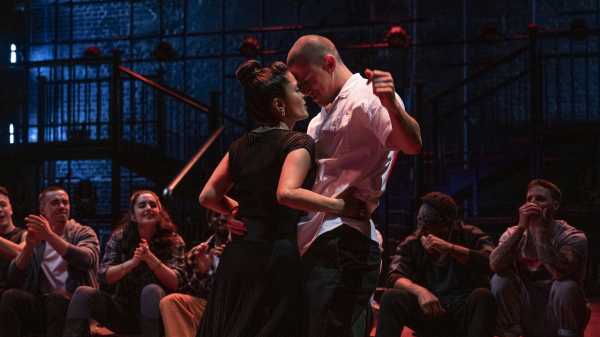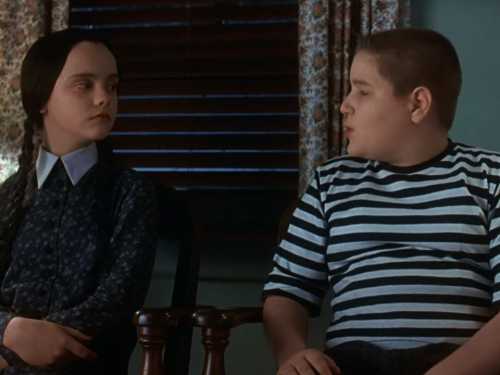
When Steven Soderbergh announced, in 2011, that he was about to retire from movies and devote himself to painting, I didn’t believe it. Not that I considered him deceitful; rather, I thought, judging from the evidence onscreen, that he loved movies and wouldn’t be able to tear himself away. I was right, sort of—after a hiatus in which he produced (but didn’t direct) the sequel “Magic Mike XXL” and directed the TV series “The Knick,” he has, since 2017, made eight feature films, of which the latest, “Magic Mike’s Last Dance,” opens February 10th. It is, of course, the third in the series of films about the stripper and dirty-dancer Mike Lane, played by Channing Tatum. The trilogy, which spans Soderbergh’s retirement and return, is emblematic of the director’s relationship to the art and the business of movies.
The tension of sincerity and cynicism, the entertainer’s public face and the creator’s personal drive, are the engine on which the “Magic Mike” trilogy runs. The first film, “Magic Mike,” from 2012, which Soderbergh directed at a moment when he had already announced his impending retirement from filmmaking, looks ruefully at the gap between talent and its exploitation, between the quest to become an independent artisan and the commercial and personal pressures that get in the way. In “Magic Mike XXL,” from 2015 (on which Soderbergh was the executive producer, the cinematographer, and the editor), the protagonist is lured back into that milieu for the joy of friendship, for the pleasure and the power of getting a rise from his audience, and for the hell of it. But, to make it worthwhile and to make it work, he acknowledges and instills the virtue and the need of rendering his performances personal, no matter how crowd-pleasing they’re designed to be.
Now, in “Magic Mike’s Last Dance,” which Soderbergh directed (and shot and edited, under the pseudonyms of Peter Andrews and Mary Ann Bernard, respectively), Channing Tatum stars in the story of an unintended return, even an unwanted one. Mike’s dancing, back in 2012, was meant to launch him in his artisanal-furniture business; in 2015, he returned to dancing in order to cope with his business’s discontents. In the new film, the business has gone under and Mike is working as a cater bartender when his past catches up to him. A wealthy woman, Maxandra Mendoza Rattigan (Salma Hayek Pinault), at whose Miami fund-raiser he’s working, gets wind of his reputation as a dancer and recruits him for a private session, for which he charges lavishly. But then, when the simulacrum of sex turns into a one-night stand, he refuses her money. Then she quickly whisks him out of his life and into hers, taking him to London on her private jet, with the promise of a job (and no sex).
First, she buys Mike an expensive new wardrobe at Liberty, and her butler-slash-factotum, Victor (Ayub Khan Din), installs him in a room of her mansion-like town house. Then she brings Mike to an opulent theatre, the Rattigan, that her husband owns and that she runs, and summons Mike to rework a long-running, stuffy drawing-room drama: a male-stripper spectacle, which he’ll conceive and direct, with notes from her, of course. “Magic Mike’s Last Dance” is a backstage musical, about the making of a musical—a venerable genre, going back to the musical that saved musicals, “42nd Street,” which also provided Busby Berkeley with his prime showcase as the first and greatest production-number visionary.
Just as the first “Magic Mike” was based loosely on Tatum’s experience as a dancer in his late teens, the new installment is based loosely on Tatum’s more recent experience behind the scenes. Soderbergh says that he was inspired to make the film after seeing the live London stage show of “Magic Mike” that Tatum and the screenwriter Reid Carolin had been working on. Discussing the movie in July of last year, Soderbergh likened it to “All That Jazz.” Not even close: that 1979 film by Bob Fosse is scathingly autobiographical, death-haunted, filled with metaphysical and psychodramatic fantasy. Speaking about his own film in recent weeks, Soderbergh more modestly likens it to his “process films,” such as the heist movies in the “Ocean’s” trilogy.
Unlike “42nd Street,” which is based on a novel of firsthand authenticity about Broadway lives, and unlike “All That Jazz,” a tale of confessional anguish, “Magic Mike’s Last Dance” feels built not organically from its real-world roots but synthetically, to concoct some kind of story that would lead to the theatrical extravaganza in question. Maxandra, or Max, is separated from the unfaithful and very wealthy Roger Rattigan (Alan Cox), whom she hasn’t divorced because, according to their prenup, she’d be left penniless. She recruits Mike for a rousingly erotic dance in her living room because she’s unhappy and alone; she tells him “no happy endings,” but they end up in bed. (Soderbergh claims to be interested in process, but he cuts from the living room to the morning after in bed, betraying no directorial interest in the pair’s emotional negotiation, let alone the physical passage.) Of course, the movie is a love story. It’s love that makes Max imagine a job for Mike. (As he acknowledges, no one ever believed in him as she does.) She makes sure that he accepts the gig by telling him that she won’t have sex with him again—she prevents him from feeling like a gigolo. It’s love that makes Mike accept her offer.
But it’s money that makes the entire setup possible, including the six thousand dollars that Max offers the reticent Mike to dance in her living room, the many millions that fund her daily life, and whatever hefty sums it takes to sustain her theatrical enterprise and tear it up and put Mike in charge of its new identity. Not only does Mike audition male strippers but Max and her casting director, Renata (Suzanne Bertish), hunt down break-dancers and street performers from as far away as Rome. (I hoped for a post-Brexit subplot involving the difficulty and delay of getting a work visa for the Italian dancer, but no such luck.) They turn Roger’s traditional theatre into a night-club-like setting with a jutting, platform-like stage, and the bureaucratic arcana and chicanery around these modifications make for a silly set of subplots.
There isn’t a whole lot of process that goes into the making of the dances, though there are a few emblematic moments, as when, during a rehearsal, Mike shows other dancers how to “keep the connection” with an actress onstage. With that young actress (Juliette Motamed), he replicates the sort of orgasmatronic intimacy that he conjured in the living room with Max, who intervenes and, with unstated jealousy, exhorts him to tone down the “testiculars” and use the whole stage—i.e., to cool it with other women. There’s a climactic sequence in which, as the opening date approaches, Mike has to work all weekend to come up with a closing number (unsurprisingly, it’s his own last dance) that involves lots of water and a ballerina. Soderbergh can’t be bothered to show the magic of his inspiration in devising it, but he makes sure to signal Mike’s intention in crafting it—as a personal story and a public declaration of his love for Max.
That obvious romance is smothered in sentimental business that sets the stage for the solo wanderer Mike’s integration into Max’s family. He becomes friends with Max and Roger’s whip-smart teen-age daughter, Zadie (Jemelia George), a pleasant presence and an obvious stereotype; and he relies on the steadfast Victor, who, after the separation of Max and Roger, went with her because she has the “bigger balls.” But the movie’s feminist trappings come with baggage. When Max, at a restaurant with Zadie and Mike, tells him to change the play in order to show that “a woman can have whatever she wants, whenever she wants,” that remark comes with an asterisk the size of her bank account: if she can pay for it.
This is a cynical movie about cynicism, a contrivance about contrivance, and, to the extent that it’s of any interest beyond the ongoing demand for Magic Mike, it reflects the terms and conditions of Soderbergh’s involvement in the film business—the dance that binds artists and impresarios with the force of the latter’s money. There’s only one thing that doesn’t get faked, however, and that’s love. (Just wait for the second ironic ricochet of the movie’s ending.) That’s what Soderbergh the director doesn’t manage to fake, either.
The first “Magic Mike” movie exuded—in images, gestures, performances, and the flair of its incidentals of dialogue and place, costume and décor—a sense of swing, a cool and confident physicality that was as much a matter of the life of the soul as of the body, as much a matter of glances and strides as of dances and performances. In “Magic Mike’s Last Dance,” the camera gyrates but doesn’t swing; the actors have little physicality beyond the dictates of the dance routines; the physical world of the movie is a mere delivery mechanism for a dispirited dispensing of the event that’s promised in the title. Soderbergh is, for better or worse, a strong director, so strong that he more or less has no choice but to make a movie that bends all material to his sensibility and his moods. In “Magic Mike’s Last Dance,” his perspective is as cavalier as it is indifferent, as crowd-pleasing as it is exasperated and even resigned. With its straining yet deadened feel, this is the movie of a director who dreams of putting on one last show before going home. ♦
Sourse: newyorker.com






